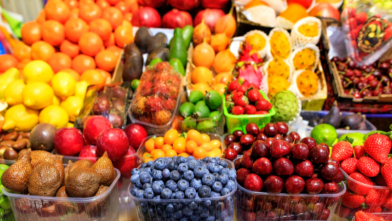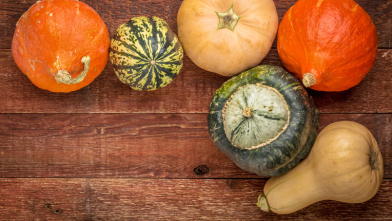If those bountiful images make you sigh with longing, but also make your chest clutch a bit because of rising prices at the markets, here are some strategies for making those images more accessible. After all, eating plenty of fruits and vegetables is one of the best things you can do for your body.
If those bountiful images make you sigh with longing, but also make your chest clutch a bit because of rising prices at the markets, here are some strategies for making those images more accessible. After all, eating plenty of fruits and vegetables is one of the best things you can do for your body.
Health Benefits of Fruits and Vegetables
Let’s look at just some of the health benefits of fruit and vegetables. A diet rich in fruits and vegetables has nutrients like potassium that may reduce risk for stroke, other cardiovascular diseases, cancer, and type 2 diabetes. Fruits and vegetables contain folate, which helps the body form red blood cells, as well as health-promoting phytochemicals, including antioxidants, that maintain optimum health. Both fruits and vegetables have concentrations of vitamins, such as C and A, and minerals. And, of course, they’re full of dietary fiber, which helps reduce cholesterol levels and may lower the risk of heart disease.
Making Fruits and Veggies Affordable
So, how can you make these delicious health benefits more affordable?
- Look for supermarket deals. Review store circulars that list weekly produce sales. Sign up for your markets’ weekly email notifications. Then create a weekly menu around what’s on sale. Once in the store, look for loss leaders .
- Buy only quantities you can eat before they spoil. At the farmer’s market, many farmers will sell you even individual carrots or pieces of fruit so you don’t overspend or waste food.
- Buy on special and freeze. If you’re a big lover of, summer berries, tomatoes, or winter squash and they’re on sale, take advantage of the price and freeze them to enjoy the rest of the year. Chop, place on a sheet pan, freeze, then repackage in a bag for storage.
- Buy with a purpose. If you have meals and recipes already planned for the week, hit the market with your ingredients list, and buy only what’s on the list.
- Buy in season and local. Produce always costs less during the height of its growing season, especially if locally grown—and it tastes better.
- Shop at the end of the farmers market. Farmers usually don’t want to haul unsold product, so you may be able to get end-of-day deals for the produce you need.
- Want to join a CSA or warehouse store but find that they offer more food than you can use? Partner with friends or neighbors on subscriptions and purchases.
- Be friendly and curious. Get to know the farmers and vendors at your local farmers markets. Ask about what they grow and make. Some may appreciate your interest and let you sample their produce or even give you discounts. At the supermarket, be polite and kind to produce department workers. They’ll often let you taste apples and other produce to introduce you to new varieties, make sure you don’t spend money on something you won’t enjoy, and direct you to the best quality of what you’re looking for.








